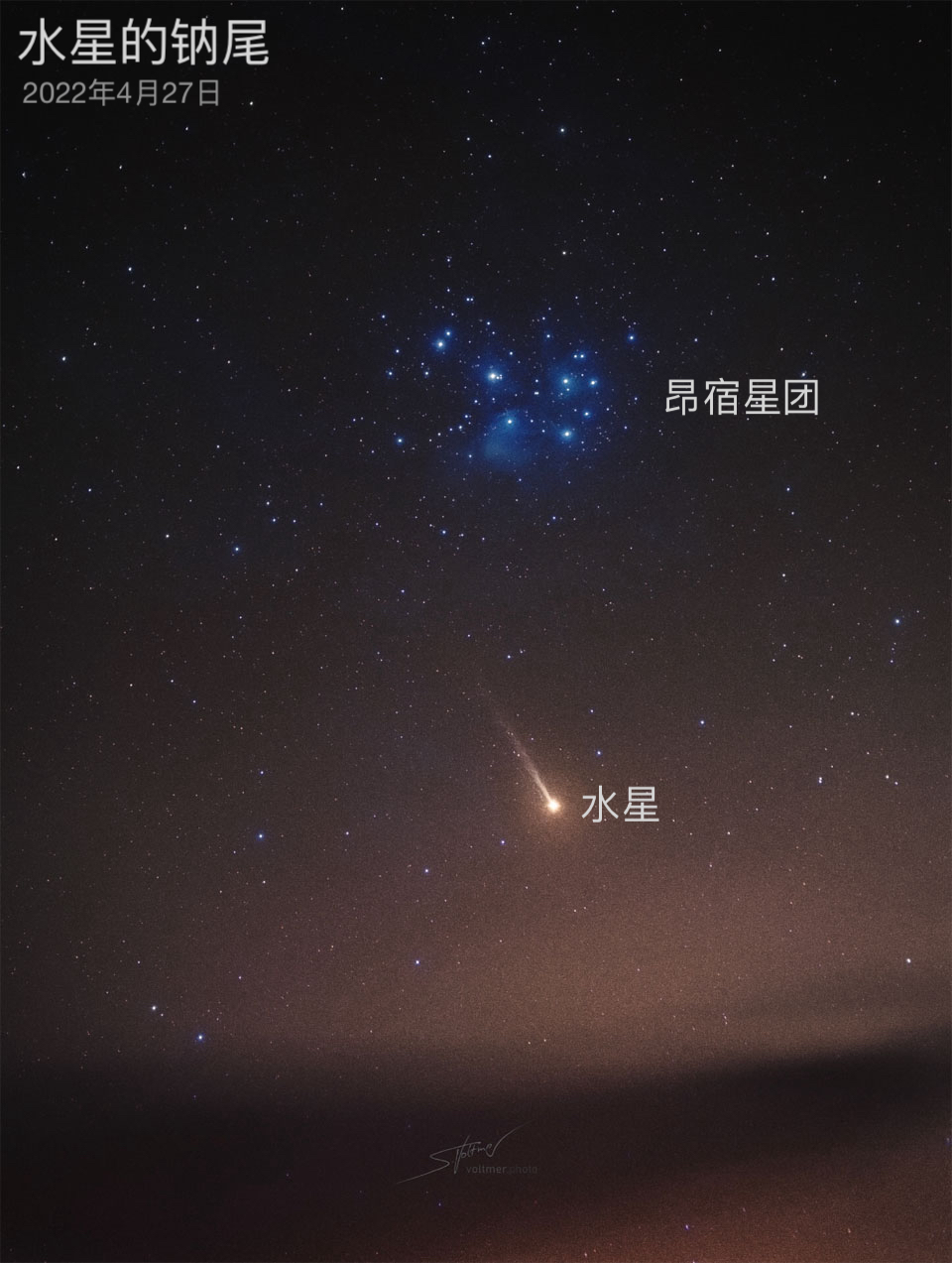2022年5月3日
Mercury’s Sodium Tail
Image Credit & Copyright: Sebastian Voltmer
Explanation: That’s no comet. Below the Pleiades star cluster is actually a planet: Mercury. Long exposures of our Solar System’s innermost planet may reveal something unexpected: a tail. Mercury’s thin atmosphere contains small amounts of sodium that glow when excited by light from the Sun. Sunlight also liberates these molecules from Mercury’s surface and pushes them away. The yellow glow from sodium, in particular, is relatively bright. Pictured, Mercury and its sodium tail are visible in a deep image taken last week from La Palma, Spain through a filter that primarily transmits yellow light emitted by sodium. First predicted in the 1980s, Mercury’s tail was first discovered in 2001. Many tail details were revealed in multiple observations by NASA’s robotic MESSENGER spacecraft that orbited Mercury between 2011 and 2015. Tails, of course, are usually associated with comets.
Tomorrow’s picture: planet pyramid parade
水星的钠尾
影像提供与版权: Sebastian Voltmer
说明: 上面影像中的这种长尾,通常和彗星有紧密的关联;不过,这道长尾并非来自彗星。出现在昴宿星团下方的这颗天体,其实是水星。针对我们太阳系最内围的行星所进行的长曝光摄影,偶而会意外发现它有尾巴。水星稀薄的大气含有少量的钠,而钠在阳光的激发下也发出泛黄的明亮萤光。除此之外,阳光也会把这些分子从水星表面释放出来,并向后方推送。在这幅于上星期在西班牙拉帕玛岛,透过纳黄光滤镜拍摄的深空影像里,水星和它的钠尾清楚可见。远在1980年代即预言存在的水星钠尾,直到2001年才首次观测到。美国航空航天局信使号探测器在2011年到2015年绕行水星时进行的多次观测,曾进一步解析出钠尾的许多细节。
明日的图片: planet pyramid parade



